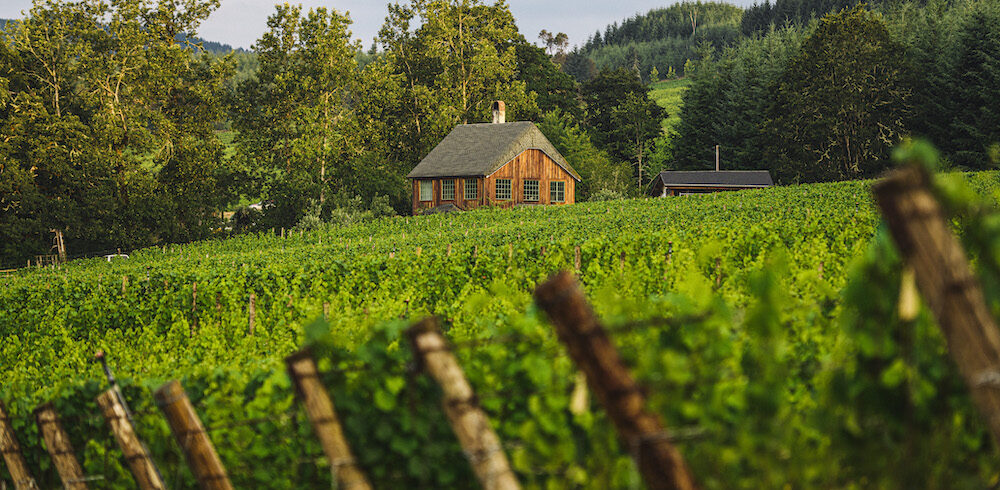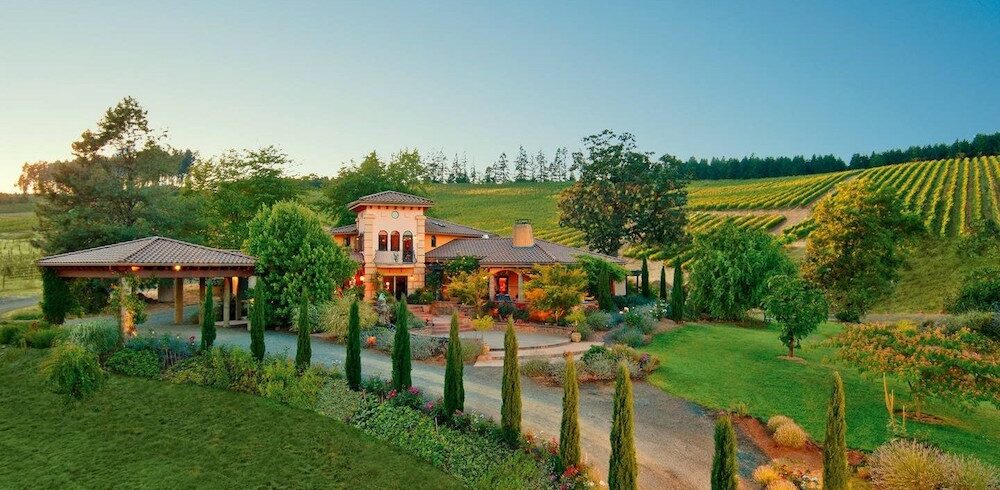Heading west out of Junction City, open fields give way to the rolling foothills of the Coast Range, where winter fog collects in the creeks and streams that wind throughout the Long Tom Watershed. This sleepy river now gives name to, and marks the eastern edge of, the southern Willamette Valley’s first officially recognized winegrowing region, the Lower Long Tom AVA. The American Viticultural Association granted approval late last year, and the designation went into effect December 10, 2021, just in time for last year’s vintage to be recognized under this new appellation. The anglicized Long Tom, called Lumtumbuff by the Chemapho and Chelamela bands of the Kalapuyan people, was the name that most aptly described the particular geographic configuration in the watershed.
The 12 wineries and 24 vineyards in the region share Bellpine soil and the benefit of geographic proximity to the nearby mountains. But, as Matt Shown of Brigadoon Wine Co. and president of the AVA says, “the mesoclimates, the distinctiveness of each vineyard in each part of the watershed,” is what makes the area unique for grape-growing, particularly for pinot noir. Shown reaches down and picks up a brick-sized chunk of sandstone from the base of a freshly planted riesling vine. “We all have soil,” he says, “but the pockets of particularity all throughout the region are really what define us.”
Having the mark of assurance as a top-quality wine region represents a notable benefit in terms of marketing, but it’s about more than sales for Shown. “It’s more about transparency, connecting the wines to the place, and bringing more knowledge to the public,” he says.
Lower Long Tom is the 22nd AVA in Oregon, and the 10th in the Willamette Valley. “It is wonderful to have this regional recognition,” says Andrew Bandy-Smith, Lower Long Tom AVA vice-president and winemaker for Antiquum Farms, “especially for the people who have been growing grapes for 20 or 30 years.” Along with all the other things that make this terroir unique, he adds, “are the people who cause it to stand out, whether they are new growers or part of a multi-generational family farm.”

Photo by Easton Richmond
Aaron and Alisha Young bought the 80-acre Walnut Ridge Vineyard property in July 2021 from the owners and founders Jim McGavin and Wendy Golish. With 30 acres under vine, the vineyard grows primarily pinot noir, pinot gris, and sauvignon blanc (one of only a few who do, and also one of their best wines) which develop an earthy flavor from the Bellpine soil. For those familiar with the former owners’ delicious food, we’ve heard that the to-die-for deviled eggs with bacon jam will continue to be served by the Youngs.
Dieter Boehm, whom Shown refers to as “the architect of the AVA,” initiated the process several years ago by circulating a petition among local winegrowers with proposals for boundaries, names, and other criteria. In 2017, the first proposal was denied because the designation needed to be in what Boehm referred to as “the common language used.”
Boehm’s High Pass Winery sits almost at the latitudinal center of the region, overlooking the valley below but still within the shadow of Prairie Mountain. Boehm, who has long been a central figure in the winegrowing community, says he is “proud to be able to show the time and effort and energy that goes into helping develop an area, and to celebrate that by putting that designation on the label.”
The tasting room at High Pass is currently being renovated to be more Covid-safe and should be open by spring to showcase some of the first wines (2021 whites and rosés) with the Lower Long Tom classification on the label. All of this is exciting for those in the know who have enjoyed fine wine from around the Eugene and Corvallis areas for years, but for visitors, the designation puts the region on par with more well-known areas like the Dundee Hills or Chehalem Mountains. Several of the wineries within the region feature onsite tasting rooms, while another handful grow the grapes out in the country and produce the wines at urban facilities nearby, including several with tasting rooms in and around downtown Eugene.
“There has been a lot of great wine made in this area,” says Bandy-Smith, “and great wine still to be made.”

Photo courtesy of Pfeiffer Vineyards
Wineries and Wineries with Vineyards within the Lower Long Tom AVA
Wineries
Bennett Vineyards and Wine Co.
Territorial Vineyards and Wine Co.
Vineyards*
Bellpine Vineyard
Chardonnay Way
Davis Reid Vineyard
Evans Vineyard
Fitzpatrick Vineyard
Gelardi Vineyard
Grace Hill Vineyard
Hildebrand Ranch
Kliewers Weinberg
Kokkeler Vineyard
Moriah Vineyard
Priddy Vineyard
Stroda Vineyard
Sunny Mountain
Union School
*Many of the wineries above are located on an estate vineyard.


